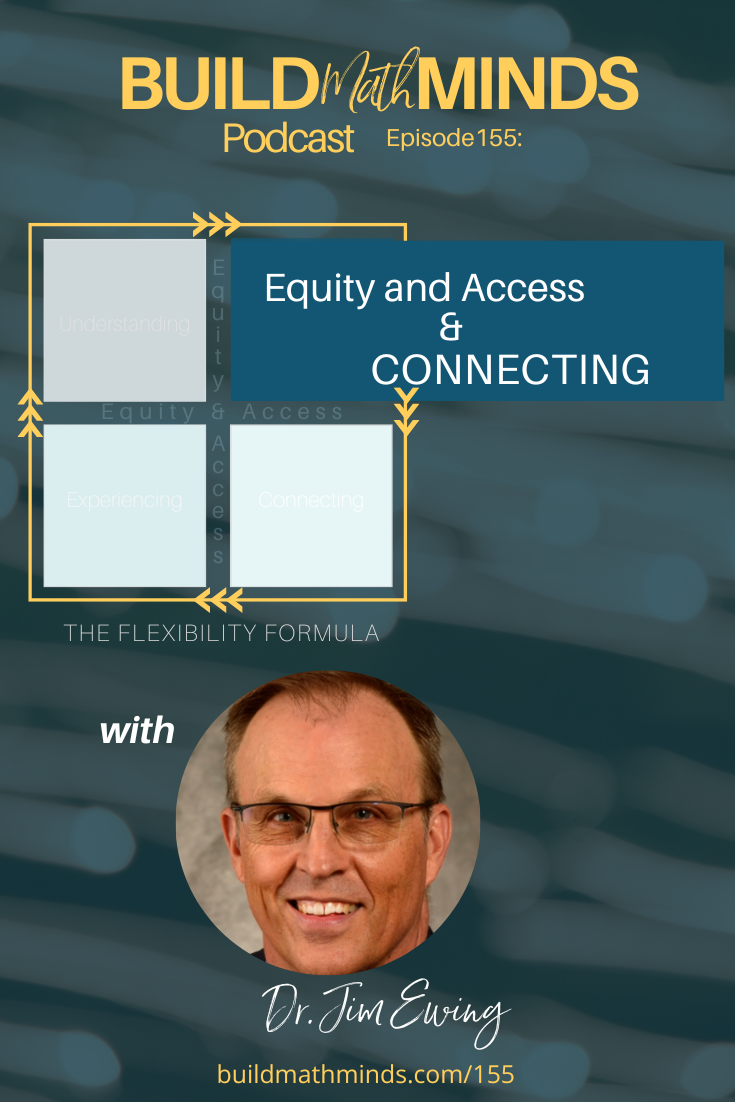Free resources at BuildMathMinds.com/freebies
Register for the 2024 Virtual Math Summit
The youtube video for this episode
Welcome fellow Recovering Traditionalists to Episode 155: Virtual Math Summit Preview: Teaching Math with Newcomers in Mind
Before we get into the episode, this week’s positivity comes from Pam who emailed in about the free Number Sense e-book she downloaded from BuildMathMinds.com/freebies.
Thank you. I am a special education director and have been following you for years now. I have read the book and I am sharing it with teachers and paraprofessionals that work with students with disabilities. These students need to learn these number sense skills and I am trying to help these providers learn as much as possible.
I love your stuff!
Pam
If you haven’t checked out the free resources I have, I’ll have the freebies page (along with anything else I mention in this episode) linked on the show notes.
The free registration for the Virtual Math Summit is open and it gives you 10 days to watch this year’s sessions. We do have a VIP access for the summit which gives you access to this year’s sessions through the end of March. Or if you’d like to access the past 7 years of summits, you can become a member of the Build Math Minds PD site. Information about all 3 options is available by going to VirtualMathSummit.com/register/
This week’s episode is our third preview of some of the sessions from the upcoming 2024 Virtual Math Summit. In this episode I’m sharing just one session with you, which is one of our keynote speakers. Dr. Jim Ewing is well known for his work around Math for ELLs. I was honored to have him do a keynote last year and he agreed to do it again this year. Latrenda Knighten, President-Elect of the National Council of Teachers of Mathematics, is our other keynote and I already shared a preview of her session back in episode 153. So in this episode I’m just sharing a clip from Jim’s session about Teaching Math with Newcomers in Mind.
“…Read this problem outloud, well I’ll read it with you, ‘Please solve: What is worth more, three tries and two conversions or two tries, two conversions and two goal kicks? Please show your work. Put your pen down when you’re finished.’…. Oh, it’s challenging? But this is in English…. Okay so this problem was in English and yet you still might have struggled to solve it, why? Once again, engage with me in the chat…What am I asking?…The context here is rugby. If you’re not familiar with rugby terms then this is going to be challenging for you. It’s not that you can’t do the math, I’m not testing your math abilities. I’m testing your knowledge of rugby and so we’re not going to get into how to solve it because I forgot myself! I haven’t played rugby for I don’t know 45 years. I lived in Wales for a year and I played rugby there. But the point here is; how often do our students, our newcomers, get tripped up not only on the language that they’re not used to, but also the culture? Remember by definition, Newcomers are students who have not been in our country for a long time. So think about the math problems that we often ask our students…Thanksgiving, we often ask about holidays, about Thanksgiving. If they’re not familiar with Thanksgiving, that might be hard for them. Halloween, that might be hard for them. Think about foods, think about measurements, sports, right? Rugby is a term that a lot of us probably are not used to and so that math problem was challenging. How about our students? How can we make it easier for our students? We never want to dumb down the math, but how can we make it easier? And just so you know, I’m working on a book, it probably won’t be out in 2024 but maybe 2025 or even 2026, but it’s similar to, it’s obviously more depth, but it’s similar to what we’ll be talking about today. And it’s, the topic will be; Meeting The Needs of Our Newcomers in Math. And so we’re going to learn four tools, just four tools right? And here we go. Remember the acronym PATH. The P stands for Position. We’ll talk about how we can position our newcomers to be successful in math. The A stands for Access. How can we give students access to our math? The T is a little bit more forced here, is Teach as in Teach Language. Yes we need to teach our students language when we are developing our students’ math concepts, we need to teach language as well. And lastly let’s use High quality research. Those are the four tools you’re going to learn today so stay tuned. Here you go, here’s a visual for you. Remember that acronym PATH. So lean in, let’s learn the first one; let’s position newcomers for success…”
If you’d like to learn more about those 4 tools, go to VirtualMathSummit.com/register to get registered so you can watch Jim’s full session along with 23 other amazing math PD presentations.
Until next week my Fellow Recovering Traditionalists, keep Building Math Minds.




